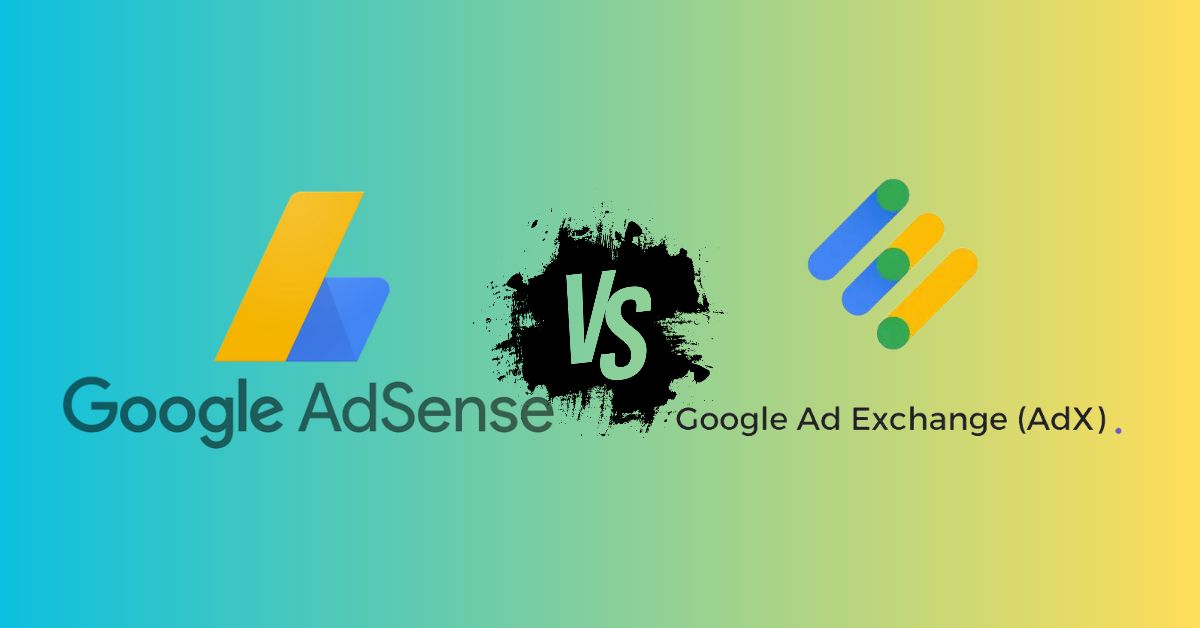
Google has been a pioneer in the digital advertising landscape, offering various solutions to publishers and advertisers. Among these, Google AdSense and Google Ad Exchange (AdX) are two prominent ad platforms that cater to different needs. While both serve to monetize ad inventory, they have distinct features and functionalities. In this blog, we will compare Google AdSense and Google Ad Exchange to help publishers and advertisers understand the differences and make the right choice for their advertising goals.
Google AdSense: Empowering Publishers with Contextual Advertising
Google AdSense is an advertising program designed specifically for publishers, website owners, and content creators. It allows them to display targeted ads on their websites and earn revenue based on clicks or impressions. AdSense operates on a contextual advertising model, which means that the displayed ads are relevant to the content of the web page.
Key Features of Google AdSense:
1. Contextual Targeting: AdSense analyzes the content of the web page and displays ads that are contextually relevant to the page’s topic. This enhances user experience and increases the chances of ad clicks.
2. Automated Ad Selection: AdSense automatically selects and displays the most suitable ads from a pool of advertisers bidding on ad placements on the publisher’s website.
3. Easy Implementation: Integrating AdSense is relatively simple. Publishers can add a small code snippet to their website, and Google takes care of the ad delivery and revenue tracking.
4. Ad Format Flexibility: AdSense offers a variety of ad formats, including display banners, text ads, and native ads. Publishers can choose the format that best fits their website’s layout and design.
Google Ad Exchange (AdX): Real-time Bidding for Premium Ad Inventory
Google Ad Exchange, also known as AdX, is a programmatic advertising marketplace that connects publishers with premium advertisers through real-time bidding (RTB). AdX provides a platform for publishers to sell their ad inventory to advertisers willing to bid the highest for the placements.
Key Features of Google Ad Exchange:
1. Real-time Bidding (RTB): AdX operates on an RTB model, where advertisers bid in real-time for ad placements based on their targeting criteria. The highest bidder wins the ad impression.
2. Premium Advertisers and Inventory: AdX connects publishers with premium advertisers, ensuring that they have access to high-quality ad campaigns and higher revenue potential.
3. Dynamic Pricing: AdX uses dynamic pricing to determine the value of ad impressions in real-time. This helps maximize revenue for publishers while ensuring advertisers get the best value for their ad spend.
4. Advanced Targeting: AdX offers sophisticated targeting options, allowing advertisers to reach their desired audience based on demographics, interests, location, and other criteria.
AdSense vs. Ad Exchange: Choosing the Right Option
1. Publishers’ Goals: AdSense is ideal for publishers looking for a straightforward ad monetization solution with easy implementation and minimal management. On the other hand, Ad Exchange is suitable for publishers with premium ad inventory, seeking higher revenue through real-time bidding.
2. Ad Inventory Quality: AdSense offers a wide range of ads but may not always provide premium ad campaigns. Ad Exchange, with its RTB model, caters to premium advertisers and provides higher-quality ad placements.
3. Control and Management: AdSense requires minimal effort in ad management, while Ad Exchange may involve more hands-on management due to real-time bidding and advanced targeting options.
Conclusion:
Google AdSense and Google Ad Exchange are powerful advertising solutions, each catering to different needs in the digital advertising landscape. AdSense is an excellent choice for publishers seeking easy monetization with contextual targeting, while Ad Exchange is ideal for publishers with premium ad inventory and the desire to leverage real-time bidding for higher revenue potential.
Understanding the differences between AdSense and Ad Exchange allows publishers and advertisers to make an informed decision based on their advertising goals, website traffic, and target audience. By choosing the right platform, businesses can effectively monetize their ad inventory, drive results, and achieve success in the competitive world of online advertising.